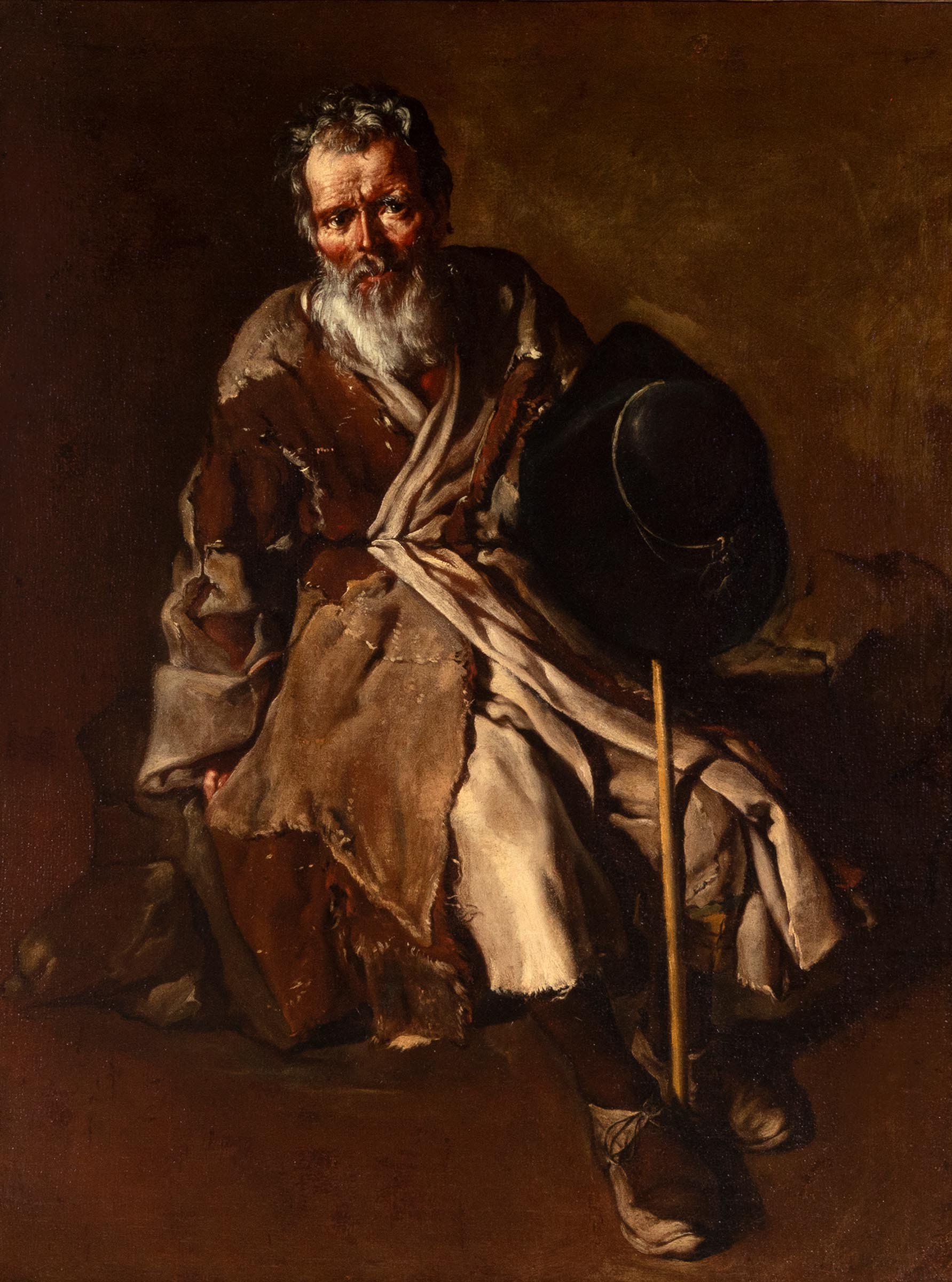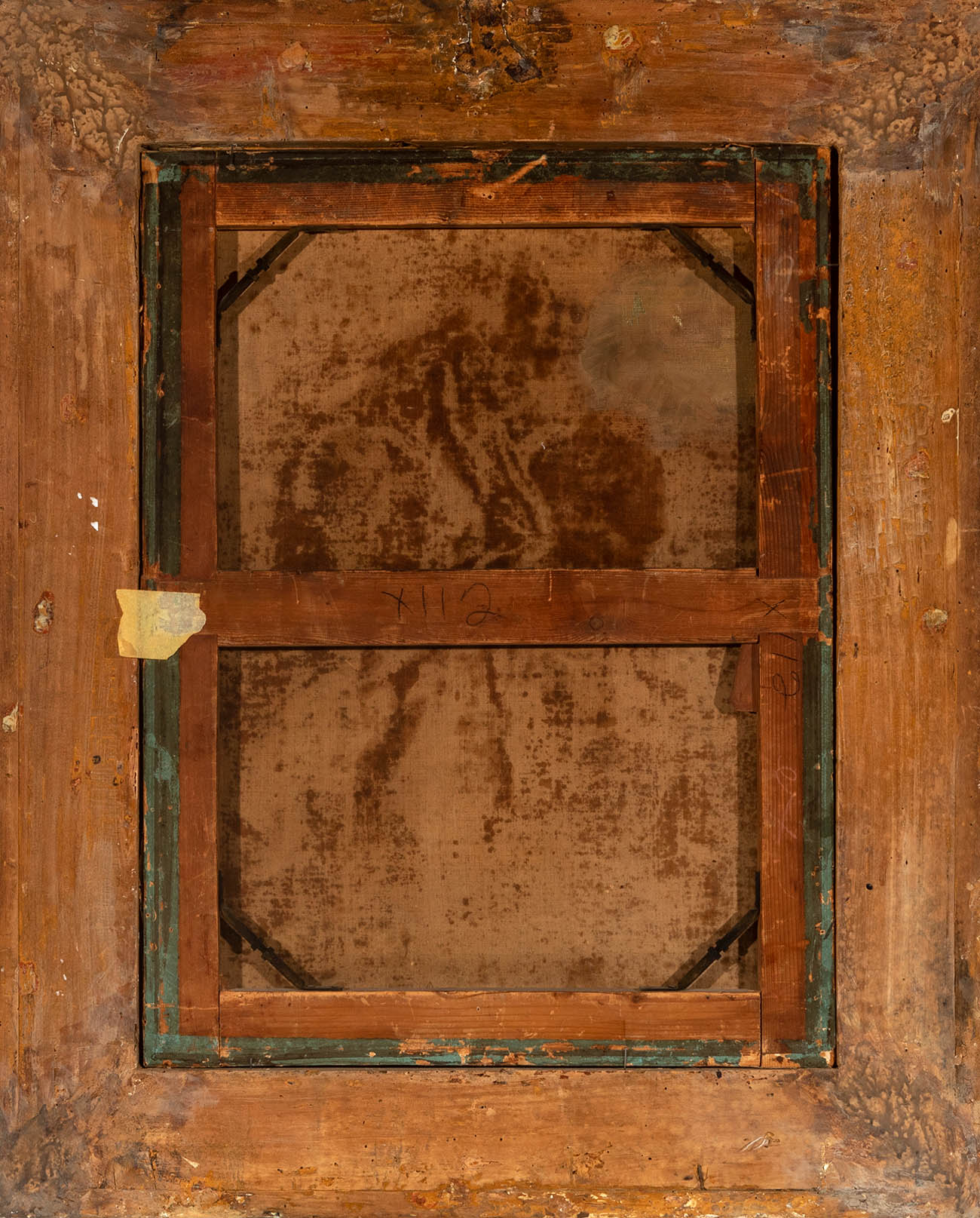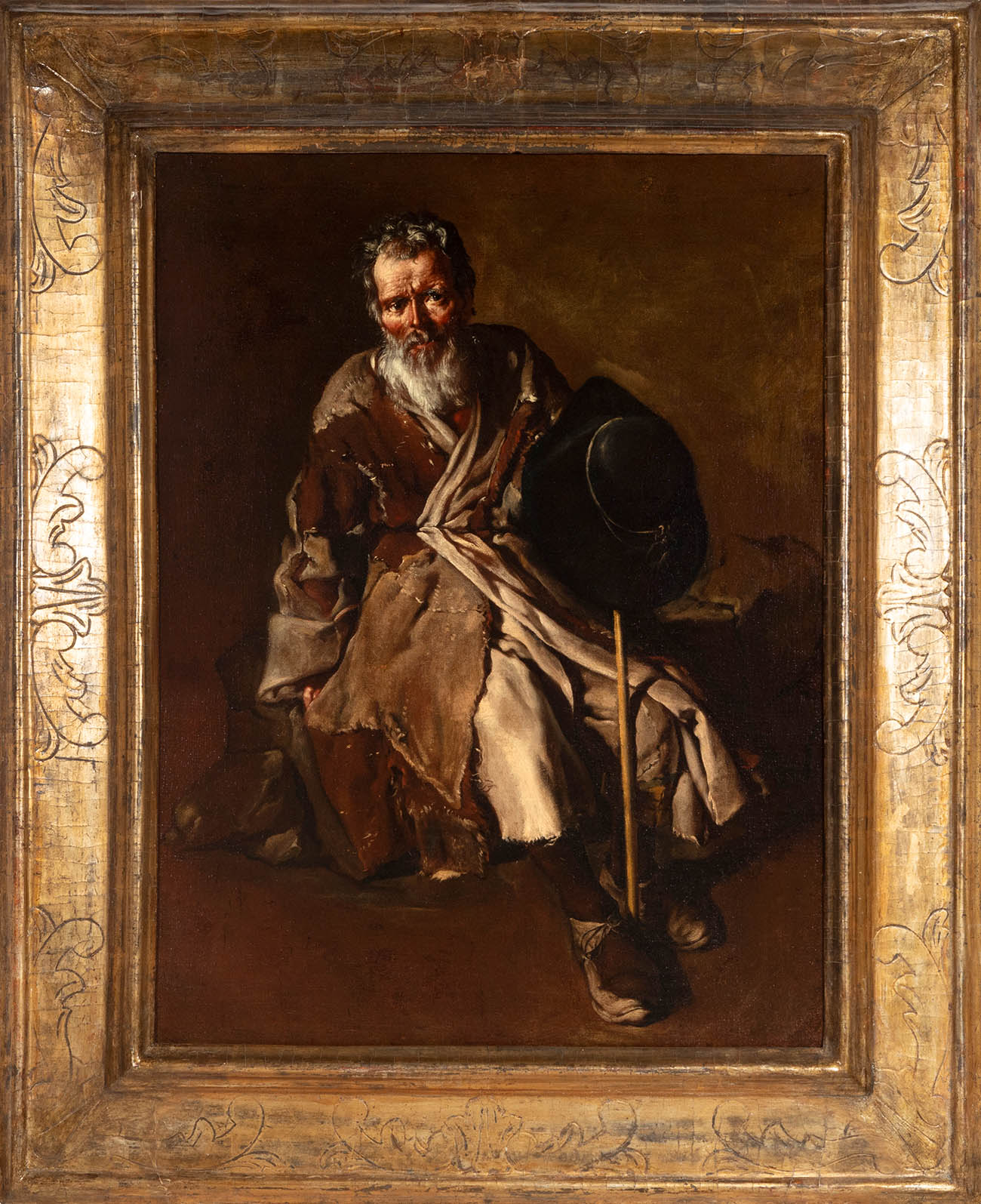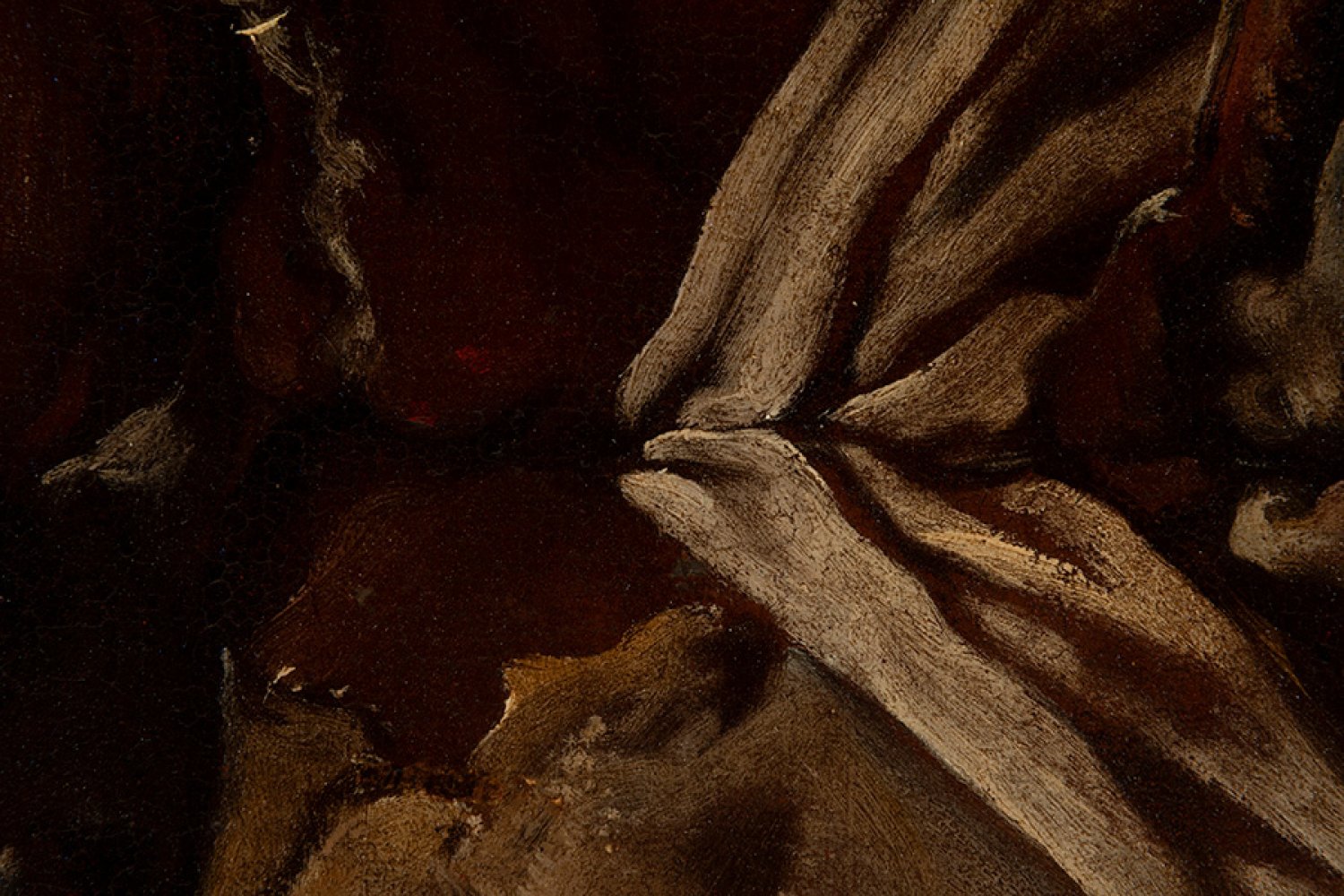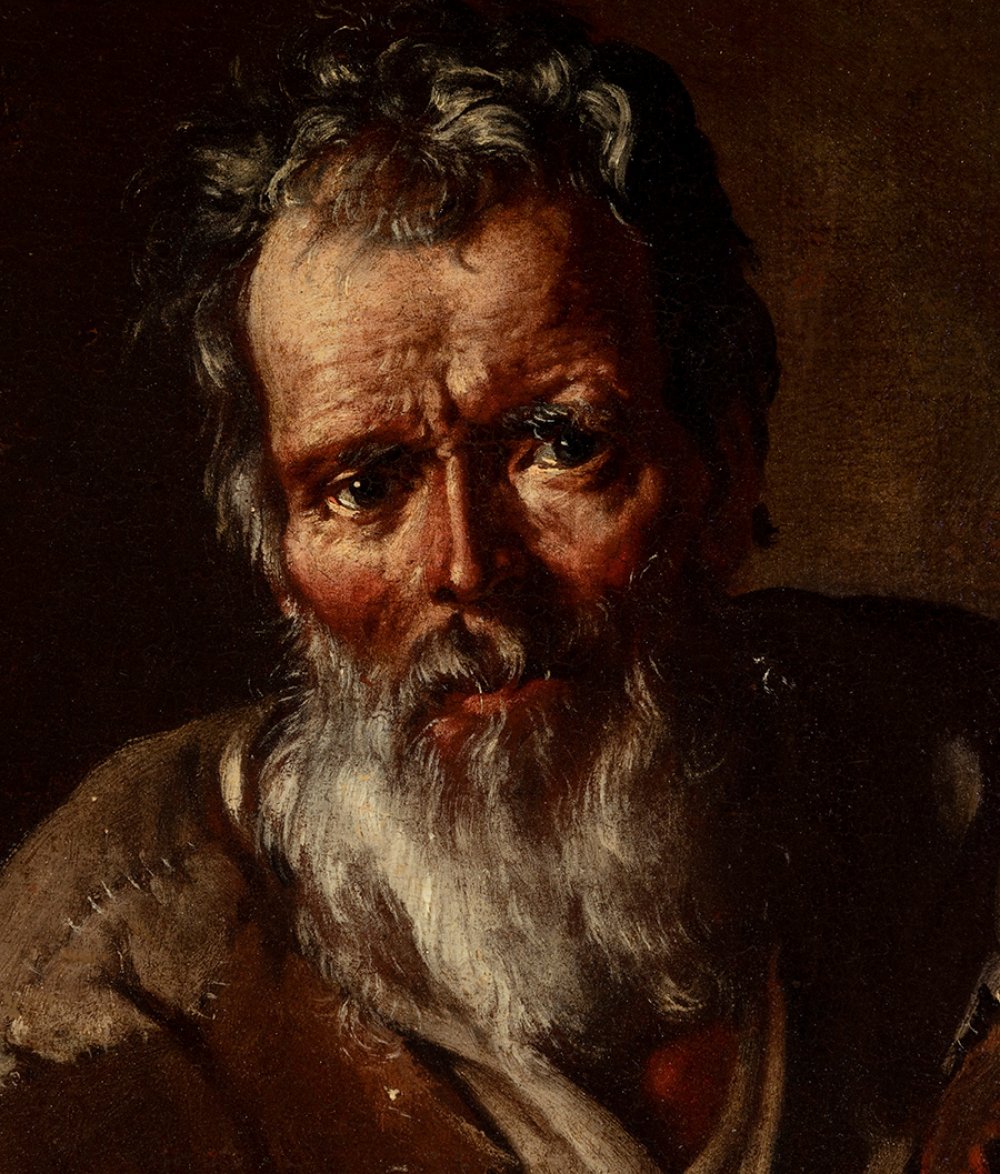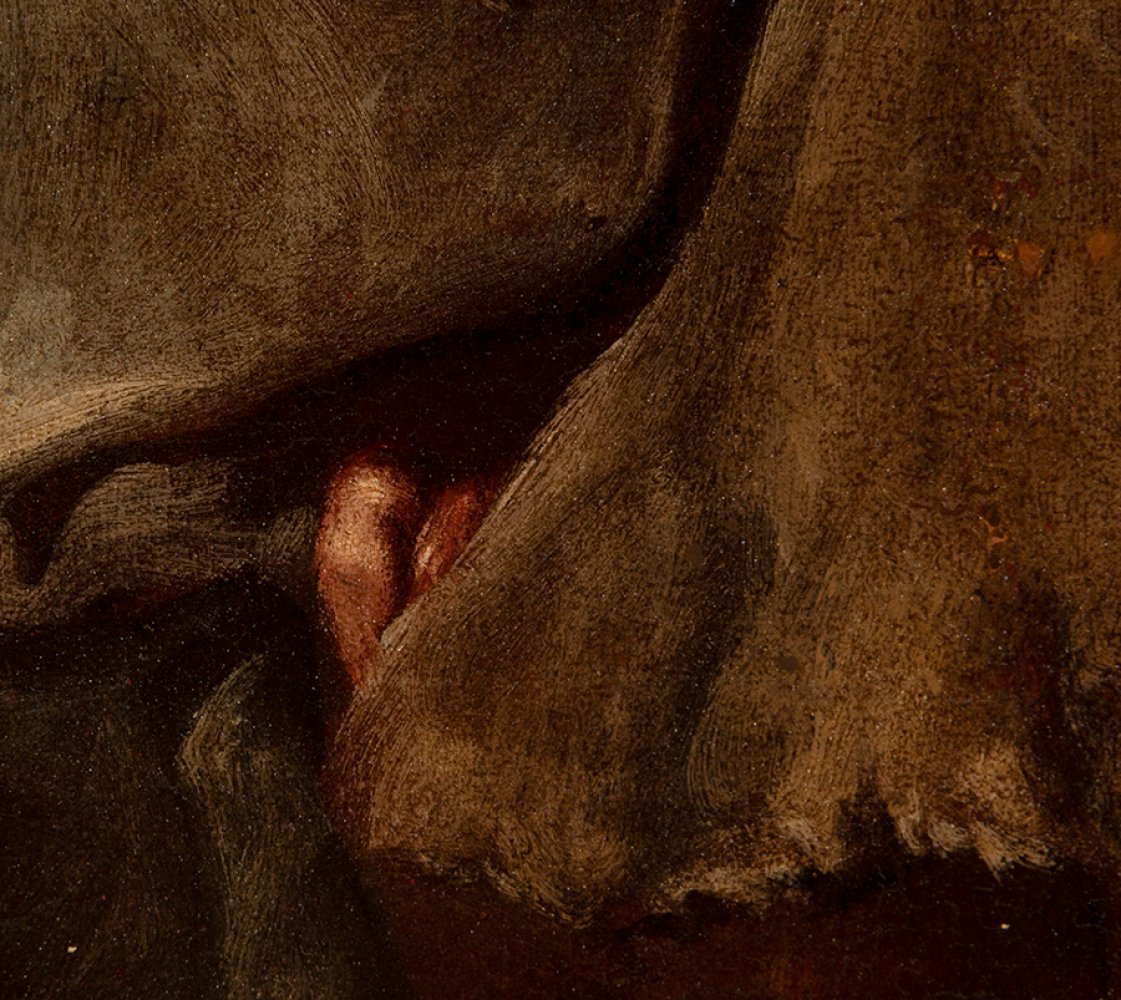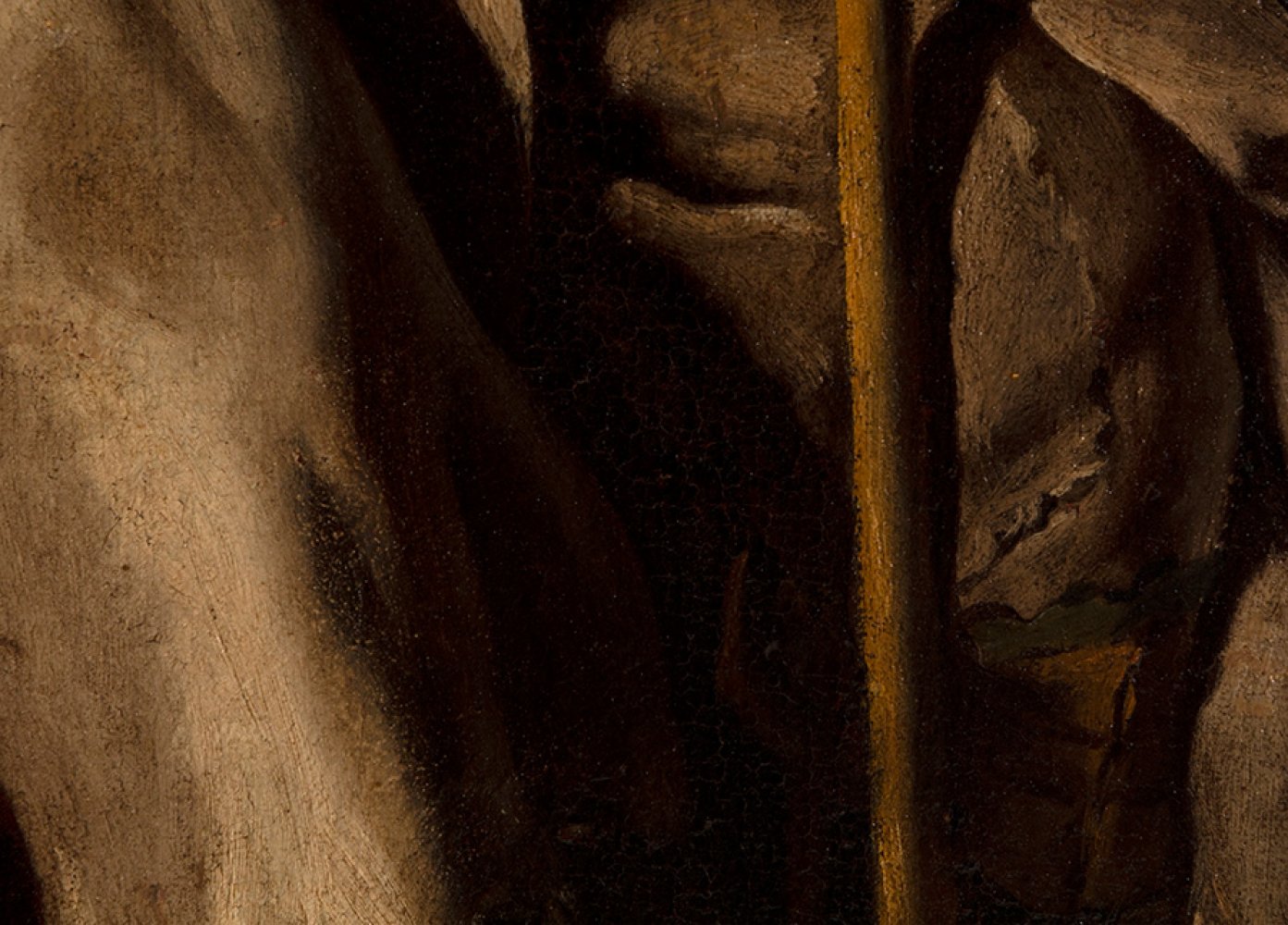61
"PITTOCCHETTO"; GIACOMO CERUTI (Milan, 1698 - 1767)."Vecchio mendicante", 1730-1740.Oil on canvas.
"Vecchio mendicante", 1730-1740.
Oil on canvas.
Re-coloured at the end of the 19th century.
It has a patch.
Frame from the 17th century, in carved and gilded wood.
In perfect state of conservation.
Provenance: The work was acquired at the auction "Importanti dipinti antichi" held at Finearte in 2003 for a total of 205000€. Previously Sotheby's New York.
Sources consulted: "Giacomo Ceruti. Group of Beggars, ca. 1737", Mar Borobia, Museo Nacional Thyssen-Bornemisza.
Measurements: 68 x 51.5 cm; 91 x 64 cm.
This canvas is a faithful reflection of the exceptional style that led Giacomo Ceruti, also known as the "Pittocchetto", to become one of the leading lights of the late European Baroque. Particularly valued in his production were his depictions of the most underprivileged classes of society (beggars, beggars, peasants, dwarves and vagabonds) and of the humblest trades, depicted with great dignity and realism. Thus, in the present canvas we are faced with the representation of an elderly beggar, whose expressive face becomes the absolute centre of the image, a portrait of great psychological depth worked with an exceptional technique of naturalistic inheritance. The overall intonation, very restrained and warm, also reveals great sobriety; it revolves around the earthy, ochre and reddish tones of naturalism, punctuated by touches of very nuanced white. The lighting, on the other hand, is not as contrasting as in Caravaggio's naturalism and, although it is of great formal importance, excessive contrasts are avoided. Nevertheless, it is a key element in the modelling of the face, its details, its small wrinkles and its expression of joyful complicity, which integrates the viewer into the pictorial space. It is highly probable that the present canvas may have been executed between 1730 and 1740, as were some of his most significant works, such as the "Mendicant" in the Brera gallery and "The Group of Beggars" in the Thyssen-Bornemisza collection on deposit at the Museu Nacional d'Art de Catalunya. According to the Museo Thyssen-Bornemisza itself, "Critics have attempted to analyse the roots and influences that may have converged in the making of these themes, in which the environment was portrayed in a very different tone from that used by other painters of the time. Among the artists mentioned as sources of inspiration are the Danish artist Bernhard Keil, the Italians Antonio Cifronti and Pietro Bellotti and especially the French artist Jacques Callot, whose engravings Ceruti used for some of his works.
Active in the north of the Italian peninsula (Lombardy, Brescia and Venice), where his work was varied and uneven, little is known of his early years. From 1726 to 1728 he worked on the fresco decoration of the Palazzo Broletto, the governor's residence, and the series of paintings of beggars commissioned by the Avogrado family that earned him the nickname of Pitocchetto (the little beggar) dates from the same period. Among his most important commissions was the series of works executed in 1736 for the Venetian palace by Marshal Matthias von Schulenburg, an important German collector, to which the Thyssen painting belongs. Also in 1736 he worked on the fresco decoration of the Palazzo Grassi in Venice. From 1737 to 1742 Ceruti lived in Padua where he is documented working for the churches of the Franciscans and Santa Lucia, where there is an altarpiece dedicated to the saint. Around 1743 he settled permanently in Milan, with occasional trips to Piacenza where he received various public commissions, working on sacred subjects and portraits.
"Vecchio mendicante", 1730-1740.
Oil on canvas.
Re-coloured at the end of the 19th century.
It has a patch.
Frame from the 17th century, in carved and gilded wood.
In perfect state of conservation.
Provenance: The work was acquired at the auction "Importanti dipinti antichi" held at Finearte in 2003 for a total of 205000€. Previously Sotheby's New York.
Sources consulted: "Giacomo Ceruti. Group of Beggars, ca. 1737", Mar Borobia, Museo Nacional Thyssen-Bornemisza.
Measurements: 68 x 51.5 cm; 91 x 64 cm.
This canvas is a faithful reflection of the exceptional style that led Giacomo Ceruti, also known as the "Pittocchetto", to become one of the leading lights of the late European Baroque. Particularly valued in his production were his depictions of the most underprivileged classes of society (beggars, beggars, peasants, dwarves and vagabonds) and of the humblest trades, depicted with great dignity and realism. Thus, in the present canvas we are faced with the representation of an elderly beggar, whose expressive face becomes the absolute centre of the image, a portrait of great psychological depth worked with an exceptional technique of naturalistic inheritance. The overall intonation, very restrained and warm, also reveals great sobriety; it revolves around the earthy, ochre and reddish tones of naturalism, punctuated by touches of very nuanced white. The lighting, on the other hand, is not as contrasting as in Caravaggio's naturalism and, although it is of great formal importance, excessive contrasts are avoided. Nevertheless, it is a key element in the modelling of the face, its details, its small wrinkles and its expression of joyful complicity, which integrates the viewer into the pictorial space. It is highly probable that the present canvas may have been executed between 1730 and 1740, as were some of his most significant works, such as the "Mendicant" in the Brera gallery and "The Group of Beggars" in the Thyssen-Bornemisza collection on deposit at the Museu Nacional d'Art de Catalunya. According to the Museo Thyssen-Bornemisza itself, "Critics have attempted to analyse the roots and influences that may have converged in the making of these themes, in which the environment was portrayed in a very different tone from that used by other painters of the time. Among the artists mentioned as sources of inspiration are the Danish artist Bernhard Keil, the Italians Antonio Cifronti and Pietro Bellotti and especially the French artist Jacques Callot, whose engravings Ceruti used for some of his works.
Active in the north of the Italian peninsula (Lombardy, Brescia and Venice), where his work was varied and uneven, little is known of his early years. From 1726 to 1728 he worked on the fresco decoration of the Palazzo Broletto, the governor's residence, and the series of paintings of beggars commissioned by the Avogrado family that earned him the nickname of Pitocchetto (the little beggar) dates from the same period. Among his most important commissions was the series of works executed in 1736 for the Venetian palace by Marshal Matthias von Schulenburg, an important German collector, to which the Thyssen painting belongs. Also in 1736 he worked on the fresco decoration of the Palazzo Grassi in Venice. From 1737 to 1742 Ceruti lived in Padua where he is documented working for the churches of the Franciscans and Santa Lucia, where there is an altarpiece dedicated to the saint. Around 1743 he settled permanently in Milan, with occasional trips to Piacenza where he received various public commissions, working on sacred subjects and portraits.
26th October - Old Masters
Sale Date(s)
Venue Address
General delivery information available from the auctioneer
Setdart offers Worldwide shipping
PICK UP IN ROOM: You can come and pick up your lots in our offices (Barcelona, Madrid or Valencia). At the moment of the withdrawal, you will be able to accept the current conditions of the lot by means of a document that you will sign.
YOU CAN SEND ANOTHER PERSON TO PICK UP: This person must present a signed authorization that you can find in our web page by accessing from BUY AT SETDART- LOGISTICS-DOWNLOAD AUTHORIZATION DOCUMENT. You can also send an e-mail with the requested data in AUTHORIZATION DOCUMENT to admin@setdart.com
Important Information
25% buyer´s premium
21% buyer´s premium at www.setdart.com
Terms & Conditions
The maximum period to pay the lots is 7 working days. You can pay either via bank transfer or with credit card through our platform www.setdart.com (we only accept VISA or Mastercard).
BUYER´S PREMIUM: 22% Hammer price + 21% VAT from the buyer´s premium
If your piece has more than 100 years, our Ministry of Culture requires an export certificate in order for the piece to leave the country. Note that if the piece goes inside the EU, there is no cost for the export certificate. If the piece goes outside the EU, there is a cost for the export certificate. You can find more information in our Ministry of Culture website: https://www.culturaydeporte.gob.es/en/cultura/patrimonio/exportacionimportacion/exportacion/tasas.html
INQUIRIES: admin@setdart.com
Setdart guides you through the entire process, from the time of award to the day you receive your lot. Our logistics team will be happy to manage your transport, and will advise you on the best shipping method with professionals from the sector used to handling works of art and jewelry.
WE OFFER WORLDWIDE DOOR TO DOOR SHIPPING
PICK UP IN ROOM: You can come and pick up your lots in our offices. At the moment of the withdrawal, you will be able to accept the current conditions of the lot by means of a document that you will sign.
YOU CAN SEND ANOTHER PERSON TO PICK UP: This person must present a signed authorization that you can find in our web page by accessing from BUY AT SETDART-LOGISTICS-DOWNLOAD AUTHORIZATION DOCUMENT. You can also send an e-mail with the requested data in AUTHORIZATION DOCUMENT to admin@setdart.com
SETDART IS NOT RESPONSIBLE FOR THE STATE OF THE PARTS ONCE THEY LEAVE OUR FACILITIES. MRW SHIPMENTS: Once the payment is made, your lot will be packed for shipment, the logistics department will send you an e-mail notifying you of the day it leaves our warehouse, changes of address cannot be made after receiving this e-mail.
INSURANCE INCIDENTS: Coverage for the value of the auction up to 3000 ? per shipment, if the value of the auction is higher, Setdart will send you a quote including the additional insurance. The insurance company WILL NOT BE RESPONSIBLE FOR THE SHIPMENT THAT EXCEEDS THAT AMOUNT AND IS NOT FULLY INSURED. MRW INCIDENTS: Maximum notification 48 hours after receipt, after which the insurance company WILL NOT BE RESPONSIBLE AND NO CLAIMS WILL BE ACCEPTED.
E-MAIL LOGISTICS: logistica@setdart.com
PICK UP YOUR MESSAGES: You can send your own messaging, prior notice via e-mail that your shipment is ready, please note 3 or 4 days in advance. This type of shipment is packaged so Setdart will provide you with a quote.
EXPENSES FOR STORAGE: We inform you that if the purchased lot is not picked up within a month, you will be charged 30€ per week per lot. Setdart Online S.L., owner of the web site "setdart.com", "setdart.net" and "setdart.org", acts as a company of Spanish nationality inscribed in the Volume 36955, sheet 182, page B-293056 of the Mercantile Registry, with registered office at Calle Aragó















